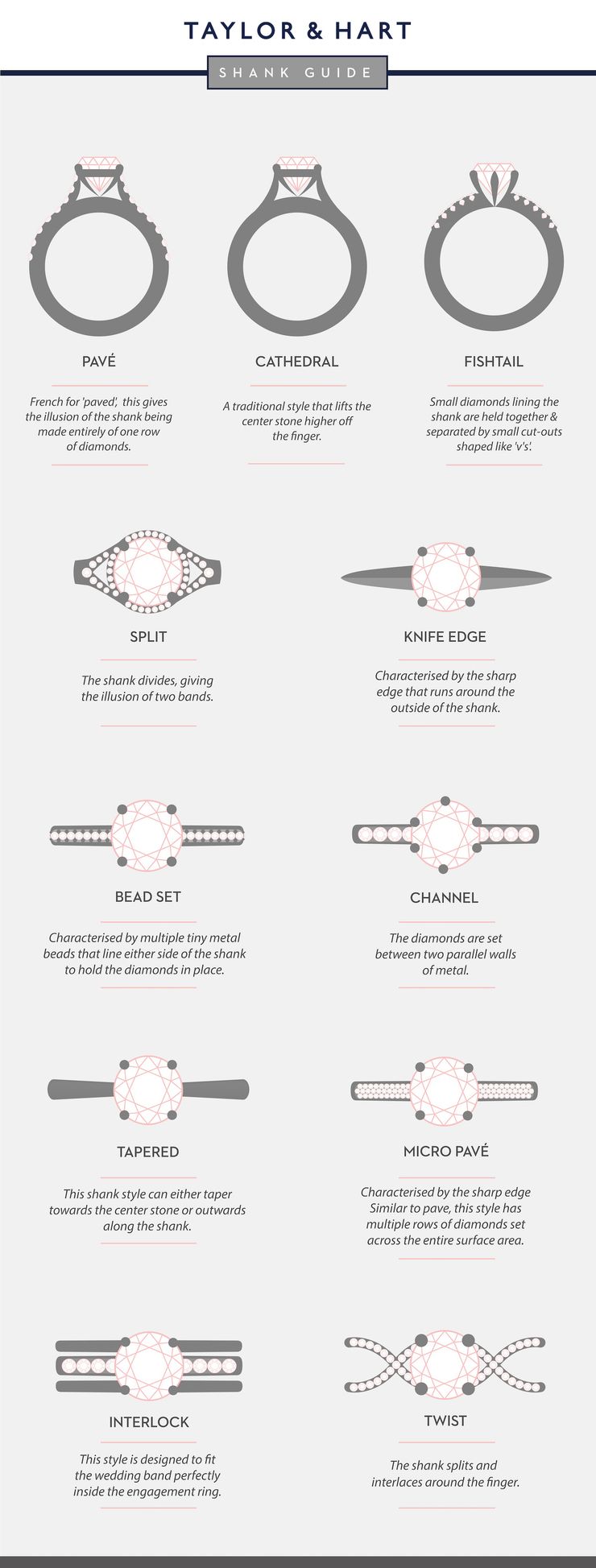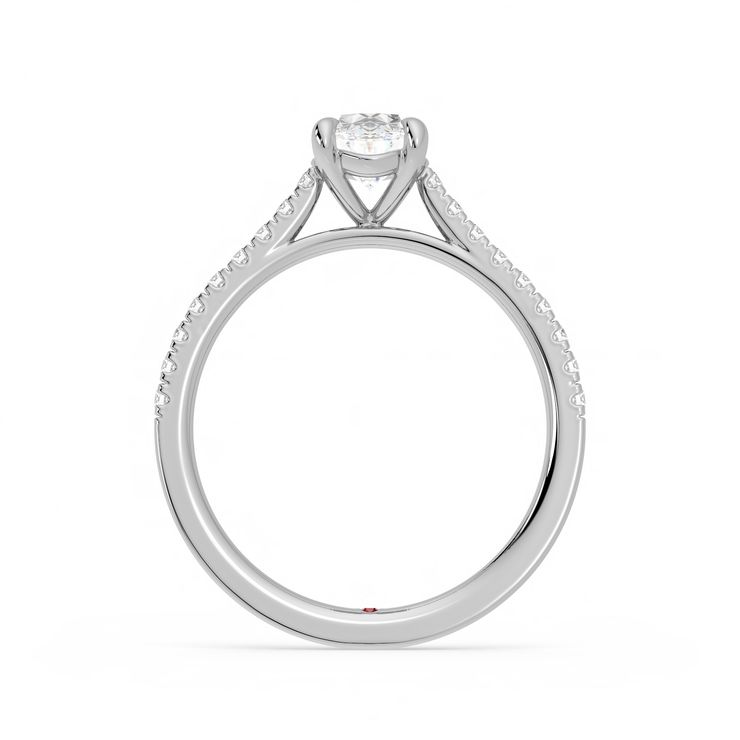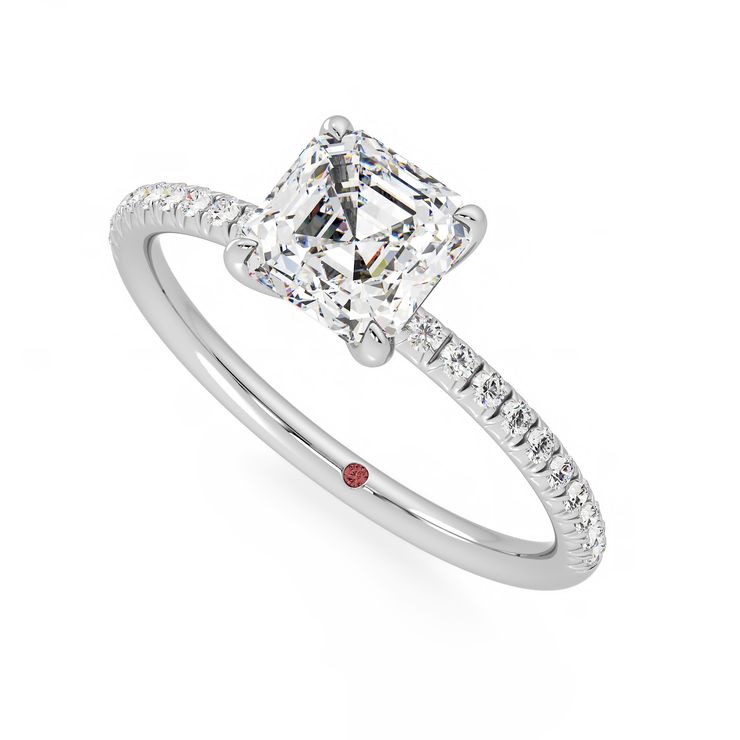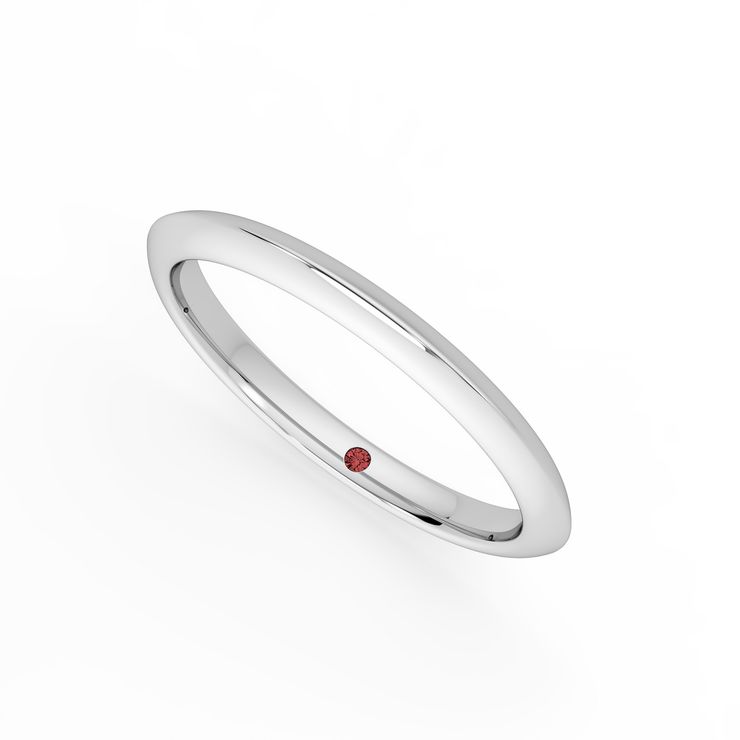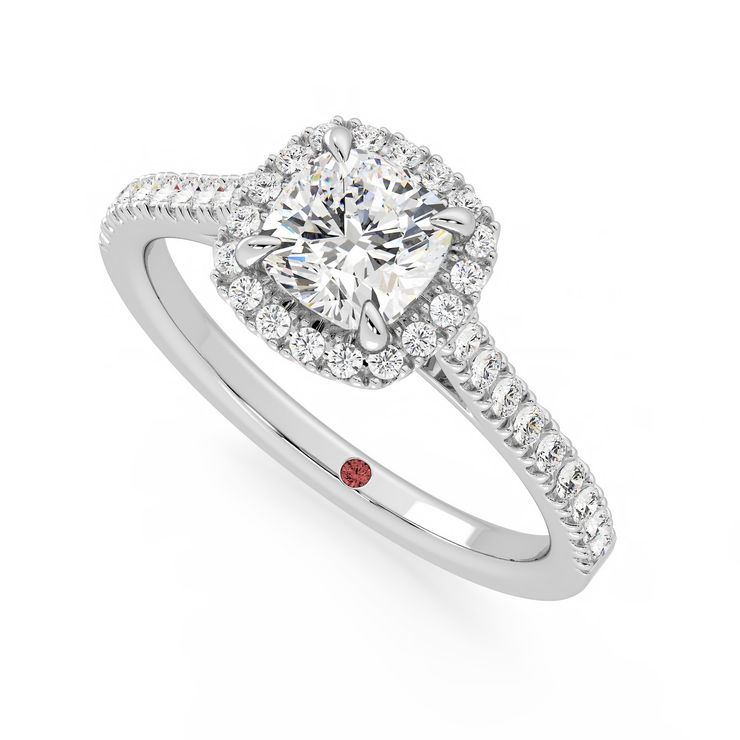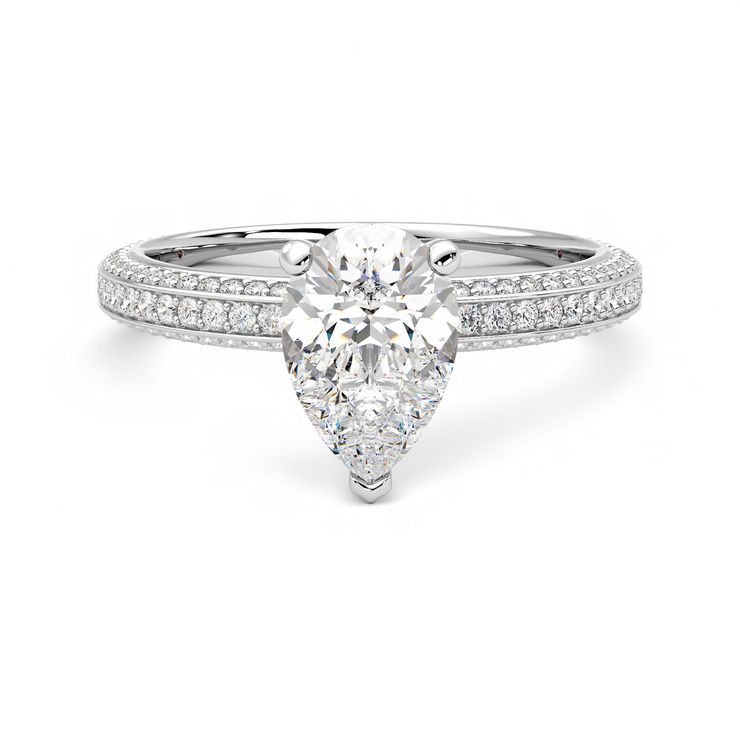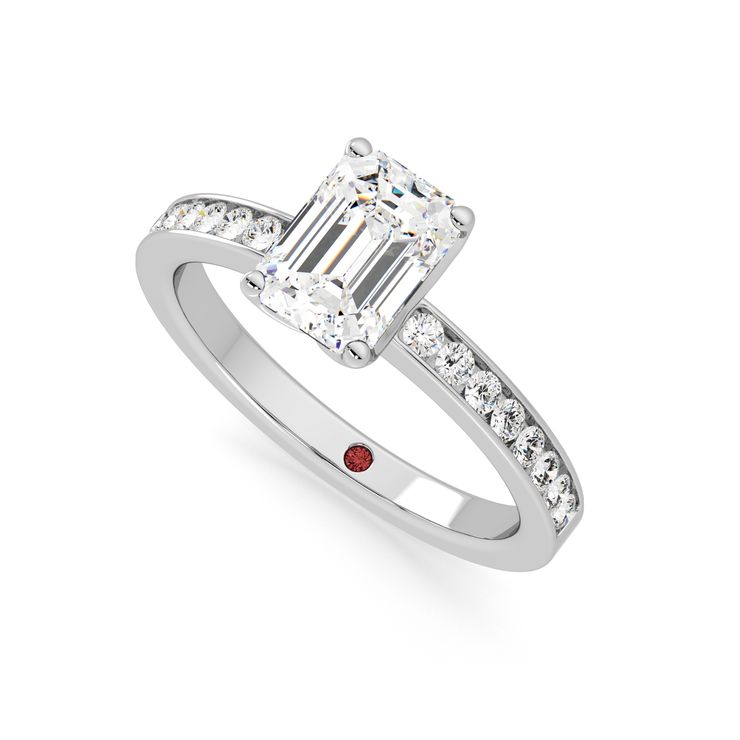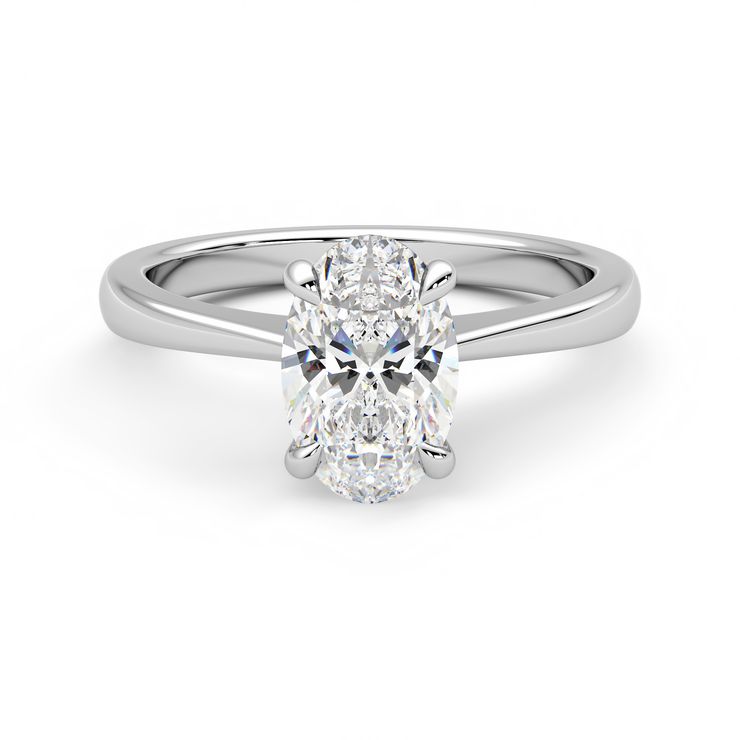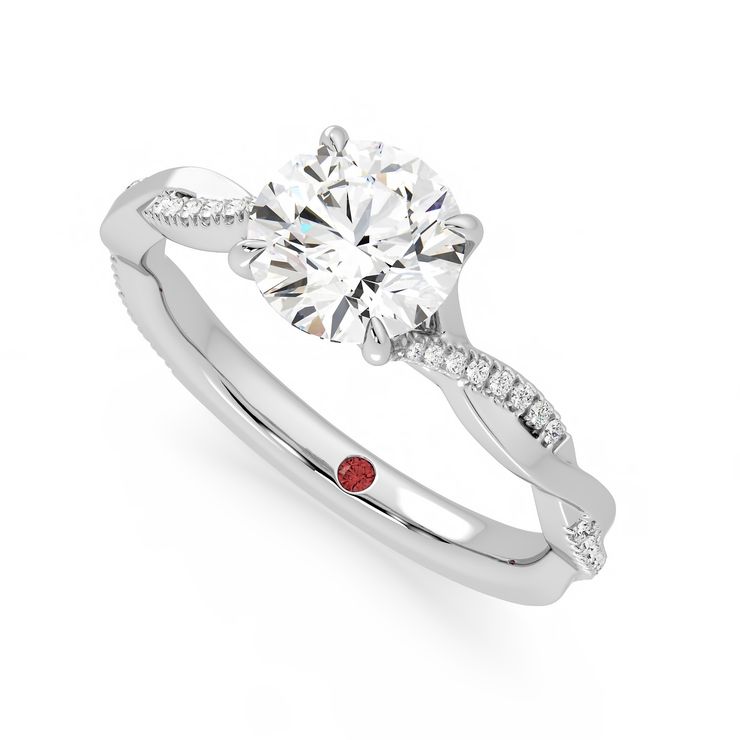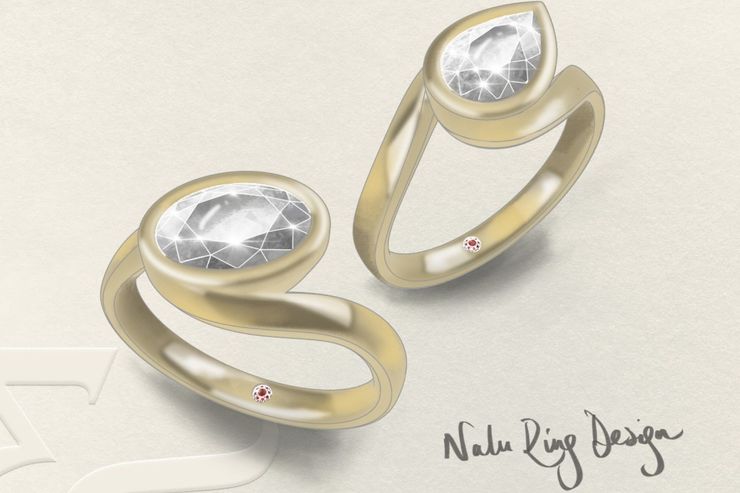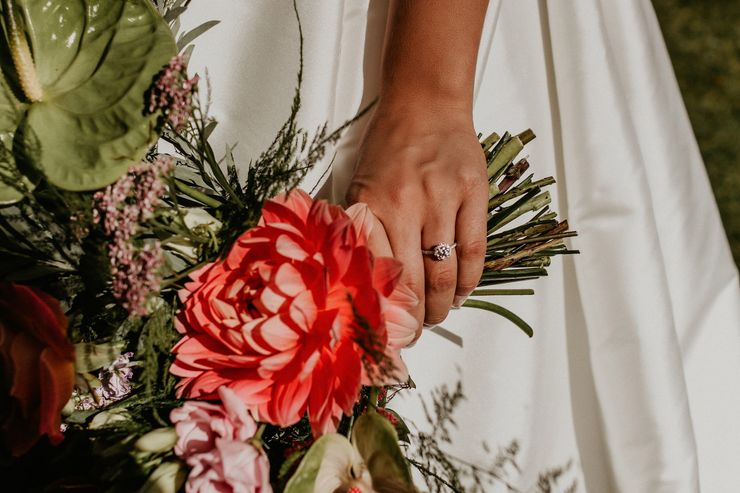As you search for the perfect diamond engagement ring, it is important to know that there are many different styles of shanks to accent your centre diamond. Although it may seem that the centre diamond is most important, the shank style can greatly enhance the way the engagement ring looks.
Firstly, “shank” is the official term for the band of the ring and some people may call this the engagement ring setting.
So now that you know the term, we can delve into the most popular shank styles and hopefully bring you one step closer to discovering your dream engagement ring setting.
Split shank
Split shanks are graceful and complement many diamond sizes and shapes. This particular style of shank divides into two, before joining with the centre stone, giving the appearance of two separate bands. The split shank can be designed in many different styles. The split shank can be simply separated with a space in between or even woven, twisted, or free form. The shank will merge back together towards the middle of the band to create a single band under the finger.
Cathedral Setting
The cathedral shank is one of the most traditional setting styles, imitating the grandeur of cathedral architecture. The way that the shank is crafted in a cathedral style lifts the centre diamond higher off the finger to highlight its beauty and prominence. In this style, the shank delicately tapers upwards to frame the centre diamond between elegant archways.

